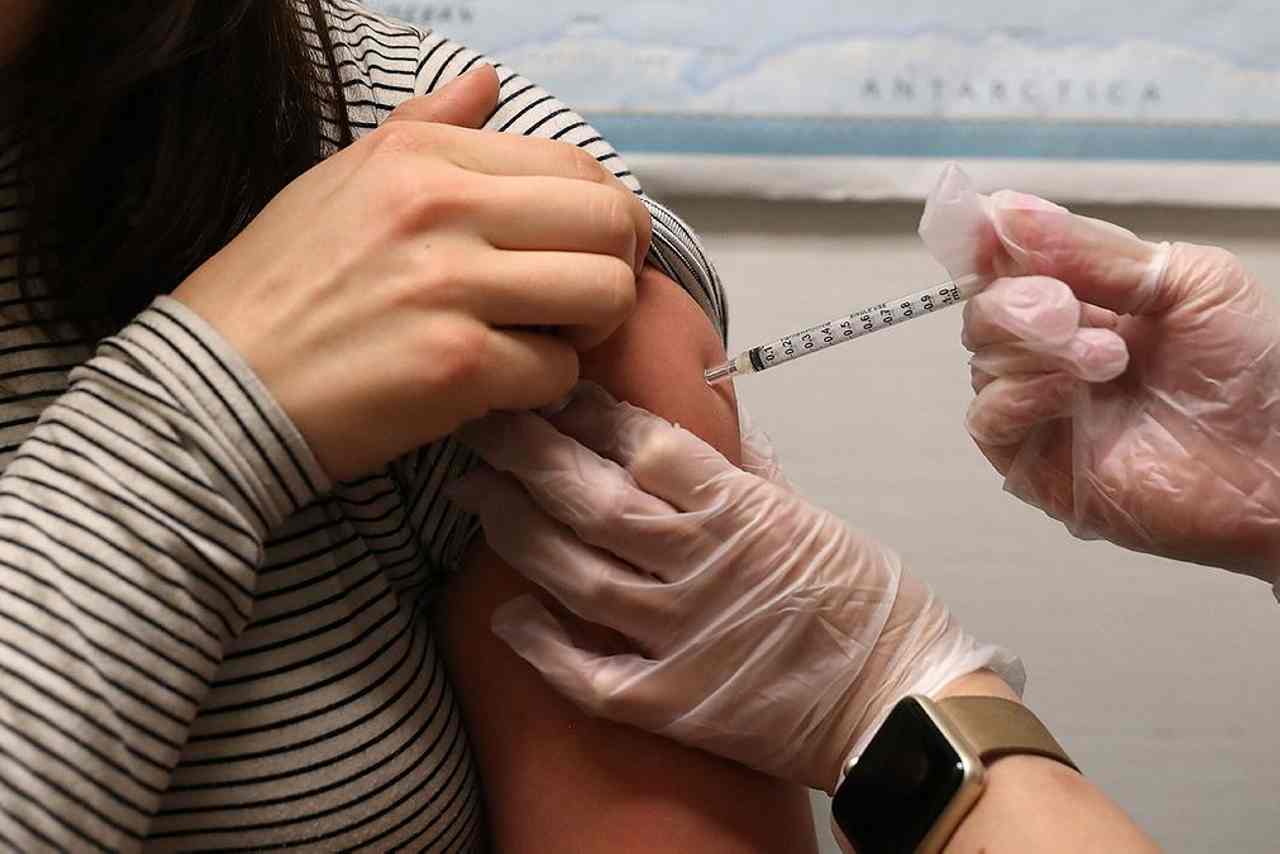Your annual flu shot protects you from some forms of flu, normally those that obtained folks sick the 12 months earlier than. But when a brand new pressure of flu reveals up, the shot could not work for it. That is why a holy grail of drugs is to create a common flu vaccine.
A common flu vaccine cannot come quickly sufficient, particularly for notably weak populations, equivalent to kids, the aged and the immune-compromised. Greater than 650,000 folks world wide die of seasonal influenza yearly, in keeping with the World Well being Group. Seasonal flu additionally prices the U.S. healthcare system and society usually, a reasonably penny, about $11.2 billion in 2018.
And people figures do not embrace the individuals who have contracted coronavirus, a illness with comparable signs to influenza, which is brought on by a distinct kind of virus from the a number of strains of influenza virus. As of March 12, there have been 125,048 instances confirmed and 4,613 deaths from coronavirus, in keeping with the World Well being Group. A number of firms are racing to develop a coronavirus vaccine.
So why is it so arduous to develop a vaccine for flu, if the risk and influence are so nice? It has to do with the truth that influenza is extremely crafty. "You may hardly think about a extra promiscuous virus," says Dr. Greg Poland, spokesperson for the Infectious Illnesses Society of America (IDSA) and professor of drugs and infectious illnesses on the Mayo Clinic in Rochester, Minnesota, noting that trillions of recent strains can develop in mere minutes. "Happily 99.999 p.c do not have genetic health, they cannot survive."
Nonetheless, those who stay can pack a reasonably severe punch. The survivors both expertise antigenic shift or antigenic drift. People who endure antigenic shift morph into novel strains that may flip into pandemic-level flu, equivalent to H1N1 and avian influenza. This infrequently occurs, with 4 influenza pandemics within the final 100 years, in keeping with the Facilities for Illness Management and Prevention (CDC).
By comparability, antigenic drift occurs on a regular basis with influenza, leading to many small virus adjustments, which makes it difficult for vaccine builders to nail even the annual flu virus squarely on the top. "So, what occurs is a couple of quarter of one million viruses are remoted yearly and sequenced to present us an thought of what’s circulating," Poland says. "It takes six months or so to develop and distribute the flu vaccine. By that point most of the strains have drifted to the purpose the place they’ve subsequent to no safety."
It is value noting right here that even a mis-matched vaccine is thought to scale back the severity of signs and size of total sickness, so it is nonetheless vital to get the vaccine yearly. Higher to be bed-ridden for 3 days than seven, or worse, find yourself within the hospital!
Certainly, there are a number of roadblocks to growing a common influenza vaccine, however a lot of biotech firms and teachers are at present working to beat them. "The entire thought is to develop broadly neutralizing antibodies," Poland says, noting that these antibodies would ideally defend towards each influenza pressure.
How the Influenza Virus Works
Plenty of the issue in growing an correct seasonal vaccine is that it adjustments a lot, so quick. This problem is just compounded when growing a common vaccine, as there are such a lot of extra adjustments to contemplate.
Merely put, the influenza virus is made up of H and N proteins and a stalk. Present vaccines try and hit the H and N proteins, that are what the virus makes use of to connect and infect human cells. The issue is that these drift and shift on a regular basis. By comparability, "the stalk portion is comparatively invariant," Poland explains. "So, the variant has been why do not we shift how we technologically make flu vaccines to the portion of the virus that does not drift and shift?"
One other complexity is that flu viruses solely infect the outermost cells lining the respiratory tract. They do not replicate all through the physique, often called systemic replication. "If you happen to have a look at vaccines that present good lifelong immunity, like measles, one of many variations there may be the sort of recall you get from a systemic an infection is totally different and a lot better than the sort of an infection you get within the superficial cells of the respiratory tree," explains Dr. Jeffery Taubenberger, virologist with the Nationwide Institute of Allergy and Infectious Illnesses. "There’s one thing we’re not understanding about how immunity on the mucosal stage units up long-term immunity. This type of protecting immunity is difficult to ascertain. We’ve to give you methods to bolster the mucosal immune responses to present us higher safety from these sorts of vaccines."
Advances in Flu Vaccines
As soon as this complicated idea will get labored out, it may show useful within the improvement of common vaccines for different respiratory illnesses, equivalent to coronavirus. "I believe that when we perceive extra about immune response and reminiscence response with mucosal infections with flu it will assist vaccine efforts towards these viruses as effectively," Taubenberger explains.
Hopefully, a number of of the quite a few vaccine improvement efforts at present occurring will pan out. A model developed by the pharmaceutical firm SEEK is about to enter section III medical trials, and Dr. Taubenberger’s personal workforce is hoping to begin human medical trials on their vaccine in 2020. Do not count on a common flu vaccine to be prepared too quickly, although, because it’s an arduous enterprise that requires quite a lot of trials to get FDA approval. "Usually it takes 10 or extra years and it prices about $1 billion," Poland explains.
Now That is Scary
The 1918 H1N1 influenza pandemic (aka Spanish Flu) contaminated 500 million and killed 50 million world wide. This was in fact earlier than antibiotics have been accessible to deal with secondary bacterial infections related to flu. Vaccines additionally weren’t round to forestall an infection and reduce severity.







